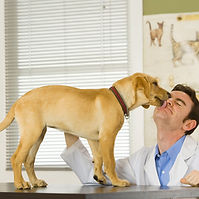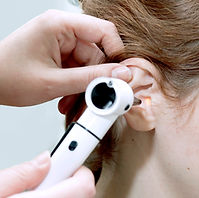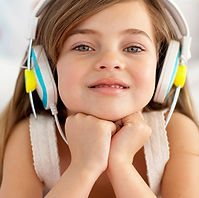
Sense of Smell: What's the Scents in That Behavior?

This lesson contains affiliate links to products I have used and personally recommend. At no cost to you, I make a commission for purchases made through the links or advertisements. These commissions help to pay for the costs of the site and enable it to remain free for anyone who wants to use it.
Objective:
-
Students will demonstrate that sense of smell plays an important role in guiding behavior.
Question that encompasses the objective:
Why is it unfair to judge a person based on your sense smell?
Prepare the Learner: Activating Prior Knowledge
How will students’ prior knowledge be activated?
-
Share with students your favorite memory that has a smell associated with it. For example, when I was a child I loved the smell of the buttery, salty popcorn at the movie theater.
-
Ask students to share their own memory that has a smell associated with it.
Materials and Free Resources to Download for this Lesson:
-
YouTube video, Furry Thief by Elfresh
-
YouTube video, Why Do Dogs Smell Each Other's Butts? by Reactions
-
What’s the Scents in That Behavior? Picture Cards (attached document, requires some pre-lesson preparation)
-
One piece of white paper per student
-
Students need colored pencils or crayons and a pencil
Input:
What is the most important content in this lesson?
To reach the lesson’s objectives, the students need to understand:
-
Smell is the primary sense involved in receiving and processing scents from our environment.
-
The nose is responsible for the intake of scent from our environment.
-
Smell serves many purposes in the real world.
How will the learning of this content be facilitated?
-
In this lesson students will initially be engaged by watching two videos about dogs and how their behavior is guided by their sense of smell, Why Does My Dog Sniff Butts? and Furry Thief. Students will then participate in a guided discussion about how human behavior can be guided by sense of smell.
-
In the next activity, students will work to describe real life situations in which sense of smell guides behavior. The real life situations are depicted in the What’s The Scents in That Behavior? Picture Cards, which will be discussed based on a set of guiding questions to help student identify and describe the smell, and the behavior that results from the smell. Students will then present, in small groups, their picture card and discussion findings to the class.
-
Then students will create a class book called Our Scent-sational Story. Each student will contribute a page, with a picture and sentences detailing a personal experience they have had with a particular scent or smell.
-
Finally, the students will answer a written independent assessment question that requires students make real world inferences, based on their understanding of the objective by answering the following question; Why is it unfair to judge a person based on your sense of smell?
Time/Application
3-5 minutes
Guided Introduction
Review the agenda with the students:
-
Guided Mini-Lesson: The Fury Thief (15 minutes)
-
Activity Part 1: What’s The Scents in That Behavior? (30 minutes)
-
Activity Part 2: Our Scent-sational Story! (15 minutes)
-
Independent Assessment (10 minutes)
15 minutes
Guided Mini-Lesson: The Furry Thief
-
Tell students they are going to watch two videos about dogs using their sense of smell to guide their behavior.
-
Play, "Why Do Dogs Sniff Each Other's Butts?".
-
Ask students how the dogs in the video are using their sense of smell to guide their behavior. Answers should indicate that dogs use their sense of smell to learn about each other. From sniffing each other dogs learn where other dogs have been, what they have eaten, and if they are in heat. (Steps 2-3, 5 minutes)
-
Play, "Furry Thief".
-
Ask students how the dog in the video uses his sense of smell to guide his behavior. Answers should indicate that the dog is able to find the dog food aisle in the store by following the scent. (Steps 4-5, 5 minutes).
-
Ask students to discuss how our sense of smell guides our behavior. Refer to the videos and ask guiding questions to focus the discussion if necessary. For example;
In "Why Do Dogs Sniff Each Other's Butts?", dogs are using their noses to get information about each other; can you think of a time when you have used your nose to get information about someone? How could your nose tell you someone has just come from the gym? Just had a shower? How does your mother know when you haven’t brushed teeth?
In the dog is using his nose to find food. Although we as humans do not have to use our noses to find food, can you describe a situation when you knew something was present simply because of the smell? How did you react? (5 minutes)
30 minutes
Activity Part 1: What’s The Scents in that Behavior?
-
Divide students into 10 small groups.
-
Inform students that each group will be given a picture card that depicts a scenario involving a scent or smell. Their job is to identify the smell, describe the smell, and what behavior will result from the smell.
-
Write the following three questions on the board to guide students in their discussion. (a) What is the smell? (b) Describe the smell. How do people react to this smell? (c) What behavior results from the smell and why? (Steps 1-3, 5 minutes)
-
Model an example for the students. Show students the example card depicting the person throwing away a bag of dog waste. Model answering each of the questions by reading them aloud from the board and answering based on the picture. (a) The smell associated with the picture is dog waste. (b) Dog waste smells badly and causes an unpleasant reaction. (c) The person in the picture has it in a tied bag because it smells badly. The person is picking it up because it other people could get it on their shoes if it is left on the ground and they would be unhappy because their shoes would stink. (5 minutes)
-
Choose another picture card and complete a guided example as a class. (5 minutes)
-
Distribute the picture cards to students, one card per each student group.
-
Tell students they have five minutes to discuss their card and how they will present it to the class. Ask students to find a quiet private spot and begin discussing their cards. Circulate to answer questions and provide guidance as necessary. Refer to the What’s The Scents in That Behavior Teacher Card. (5 minutes)
-
Regroup as a class and ask a group to present their card. Continue until each group has presented. (1 minute per group, 10 minutes)
15 minutes
Independent Assessment: Our Scent-sational Story!
-
Inform students they will be making a class book about their own personal experiences with their sense of smell, called Our Scent-sational Story!
-
Ask students to take a few minutes to think of a time when they reacted to a scent or smell.
-
Pass out one piece of white paper to each student.
-
Inform students they are to draw a picture depicting their personal experience with a particular scent. They must also write two-three sentences describing their experience. Refer to the questions from Activity 1 as guidelines for this writing.
-
Students complete their pages independently.
Collect and publish by adding a cover and stapling together. Display Our Scent-sational Story in the classroom and encourage students to read their collective work.
Individualized Instruction/Scaffolding
English Language Learners/Students with IEPS will be supported in this lesson through written repetition of new vocabulary words, and multiple representation of vocabulary words through printed images. In addition, scaffolds such as sentence starters and note-taking graphic organizers should be implemented at the teacher’s discretion.














